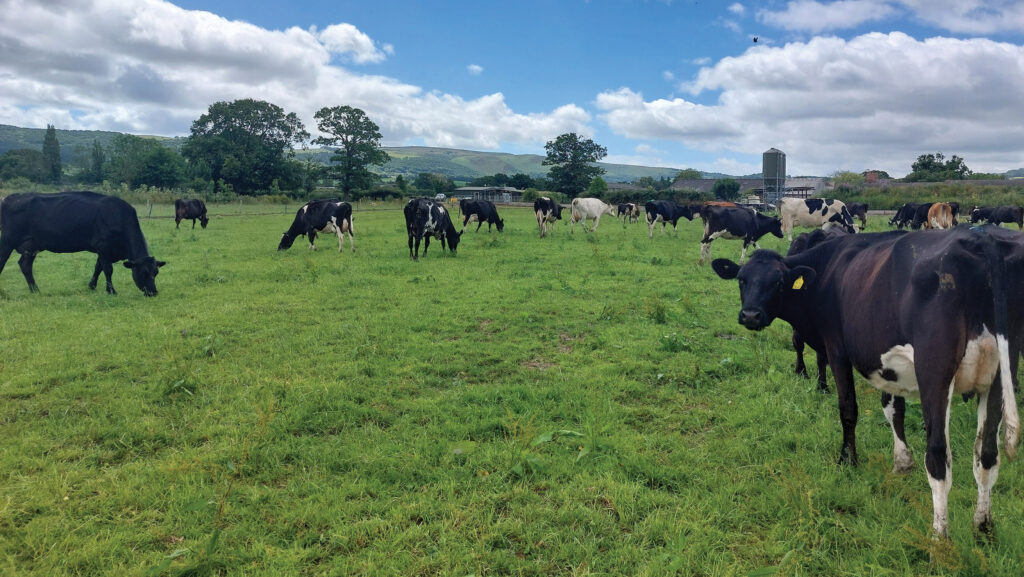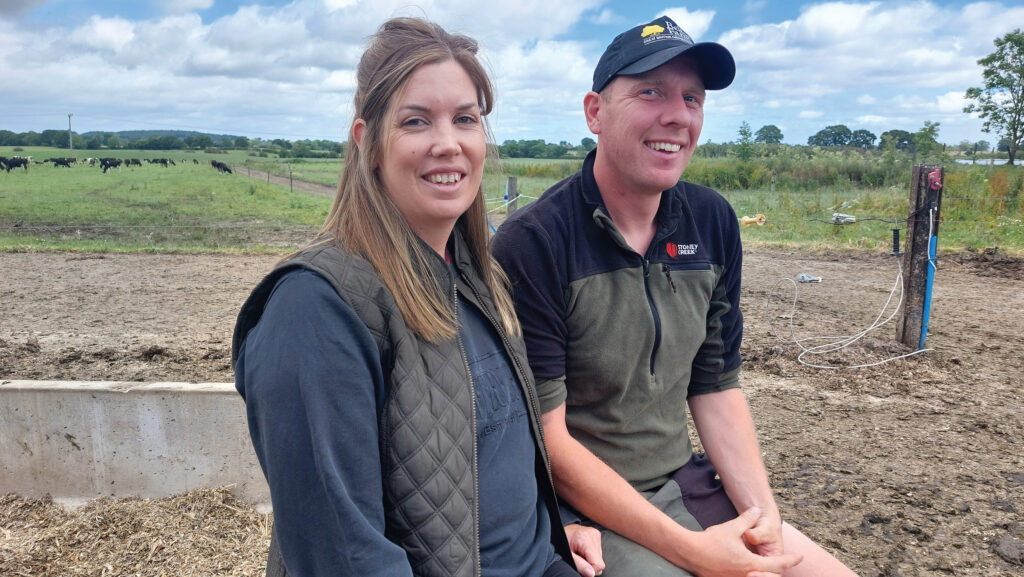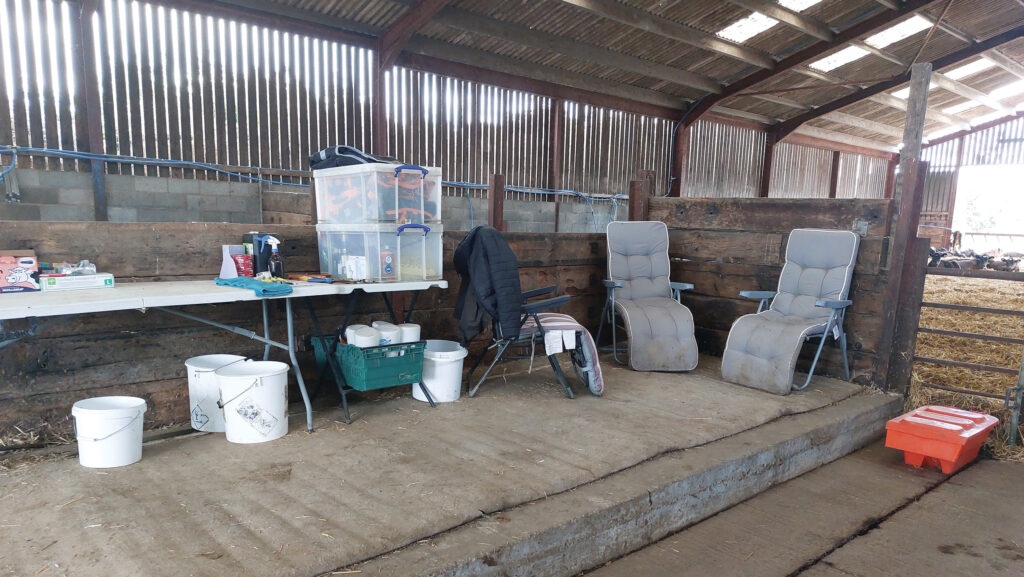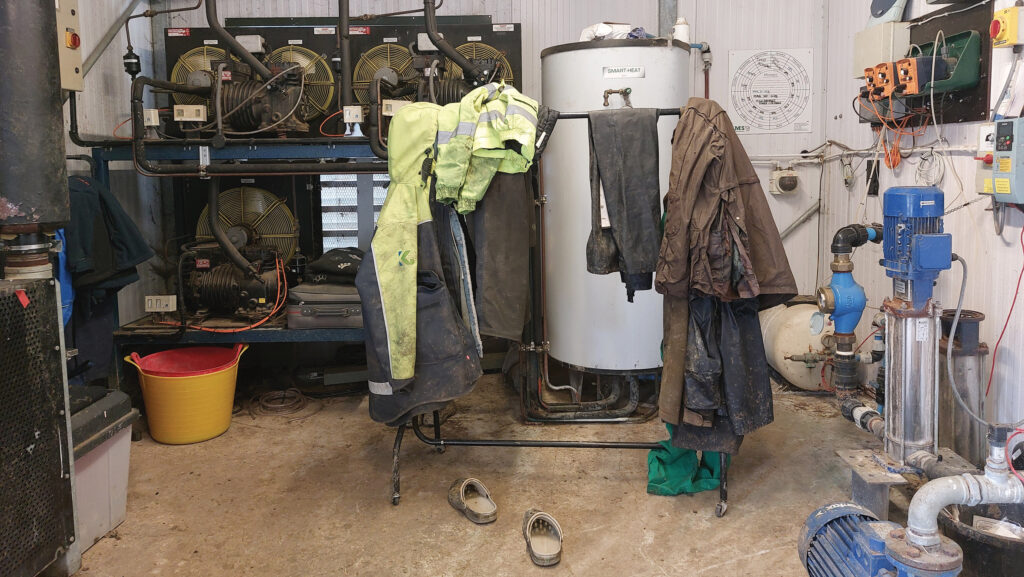Tips on motivating staff during block calving
 © MAG/Shirley Macmillan
© MAG/Shirley Macmillan Finding out what life’s priorities are for staff is the key to keeping them engaged during the intensity of a block-calving period.
Without support, it is easy for employees to become fatigued, overwhelmed or demoralised.
The resulting combination of tiredness and hunger leads to a drop in concentration and stupid mistakes occur, say Teaghan Tayler, and her husband, Gregg, who manages a 350-cow organic herd in Shropshire.
See also: Advice for managing a split-block calving herd
Shropshire farm facts
- Split-block calving 66% in spring, 34% in autumn
- Organic
- 350 crossbred cows
- 6,000 litre herd average
- 123ha grazing platform; 30ha of winter grazing
- 53 R1 heifers
- 70 R2 heifers
- Workforce: three full time plus a calf rearer
- Milking through a 30/60 parlour, no feeding or cluster removers
Since a switch in milk contract led to a split-block herd (each block is nine to 10 weeks long) this couple is acutely aware of the effects of concentrated periods of work in the farming year.
“Staff might leave a gate open, put calves in the wrong pen, or tag incorrectly,” says Gregg.
“It’s just because people are tired and not thinking. Our worst mistake has been an antibiotics failure just because when someone is tired, their attention to detail drops.
“In this case, we changed our protocols to prevent it happening again and now have a separate antibiotics-cow group.”
Teaghan says they have had staff confusing good-quality silage bales for milking cows with dry cow forage, fences broken and electric fencing erected over a trough, so that cows could not drink.
Colostrum protocols are easily forgotten, she adds, as testing is missed, or different types of milk mixed up.
“Staff can be so busy dealing with the cows that calves become an afterthought, yet the consequences [of getting it wrong] are huge,” she points out.

Teaghan and Gregg Tayler © MAG/Shirley Macmillan
Farm roster
Their advice to other block-calving businesses is to consider how the roster affects individual staff (and employed family) personally.
Asking them which days of the week would be best for them as rest days is important, she says.
“How does a new recruit fit into your farm: [what’s] their experience; have they got family? It’s important to construct the kind of day they want.
“Look at your staff team and think about what they need for support; it might compromise us, but we get happy staff.”
One of their previous employees, for instance, was a keen family man who wanted to be able to do the morning school run.

The calf-rearing rest area © MAG/Shirley Macmillan
The couple made sure his work routine could release him for 8.30am.
They also currently have a rugby player in the team and his designated day off is Saturday, while another employee enjoys attending conferences, so they make it happen.
Gregg says they like to progress their staff and offer a range of training courses and discussion group meetings during the year: “And this all still happens during calving – we manage the farm so that staff can go and learn.”
Underpinning their whole system is a 5-2 (five days on, two days off) roster.
This carries on through autumn calving, but in spring it moves to 6-1 because of sheer cow numbers creating too much work for two people: “This year we peaked at 15-16 calves born a day in spring,” adds Teaghan.
The working day starts at 5am, and finishes at 5.30pm so that everyone can be home for 6pm-6.30pm.
In winter, with an autumn-calving mob, the routine is a seven-hour working day. Gregg covers the night shift during calving, from 12am to 4am, and does the 9pm nighttime check.
Food and drink
During calving, a combination of food and good communication helps maintain motivation.
Two employees are in their early 20s – an age group Teaghan finds does not look after itself very well at busy times, therefore she does.
“We never compromise on breaks: staff get one hour for breakfast and one hour for lunch, two in winter – even if we are TB testing and Gregg has to cover them. It’s important they get to go home, eat and rest,” she says.
“If people are starving during the working day, then they make mistakes. We do things such as make an extra portion of dinner to send home with them if there has been a bad calving.

The drying room © MAG/Shirley Macmillan
“We try to do two or three pizza evenings and take them, or some beers, to the shed at the end of a busy day.”
As well as supplying the usual tea, coffee, sugar and milk, Teaghan makes sure the staff room is always stocked up with food – from instant porridge and soups, to carbs in the form of chocolate, muesli bars and biscuits.
Staff have access to a kettle, fridge and microwave, as well as proper seating and toilet facilities, and the pump room is set up for drying wet clothes.
Staff meeting
To make sure that the whole team is aware of what is happening on farm, the Taylers hold a monthly staff meeting, and during calving this is done over a fried breakfast, which they supply.
“If we expect them to give up their break to meet, it’s the least we can do. We discuss this week’s and previous week’s jobs, sick cows, urgent jobs.
“Anything personal and private is done one to one, unless it’s something that affects everyone such as an antibiotics failure in the tank,” says Teaghan.
Gregg adds: “We also speak to our staff a lot through the working day. You can pick up when they are tired and might drop the ball by pulling them to one side and having a heart-to-heart.
“It’s important they know the doors are open if they are in trouble.”
Holidays
Each team member has 23 days’ holiday plus bank holidays to fit into the calendar year.
These are logged on the farm’s shared work calendar, and Teaghan and Gregg are keen to make sure everyone takes their allocation. Leave cannot be carried over.
“We try to encourage staff to take a week off between calving and mating and always make sure we have a two- to three-week gap between the end of calving, this year on 24 April, and the start of mating, this year 15 May,” she says.
The Taylers take their week’s holiday away from the farm to be sure of a break and set a good example and recommend staff take holidays in summer and again at Christmas.
While there might not be any thanks for extra efforts to boost staff morale and keep them motivated during calving, it is important that farm business owners and managers do not expect it, says Teaghan.
Instead, it is done to ensure there is no dip in team morale, work rate or concentration level during a critical time for the business, she says.
The payback is a motivated, effective workforce not a constant cycle of training and recruiting new people: “We see staff happy and motivated and that’s our return on investment.”
